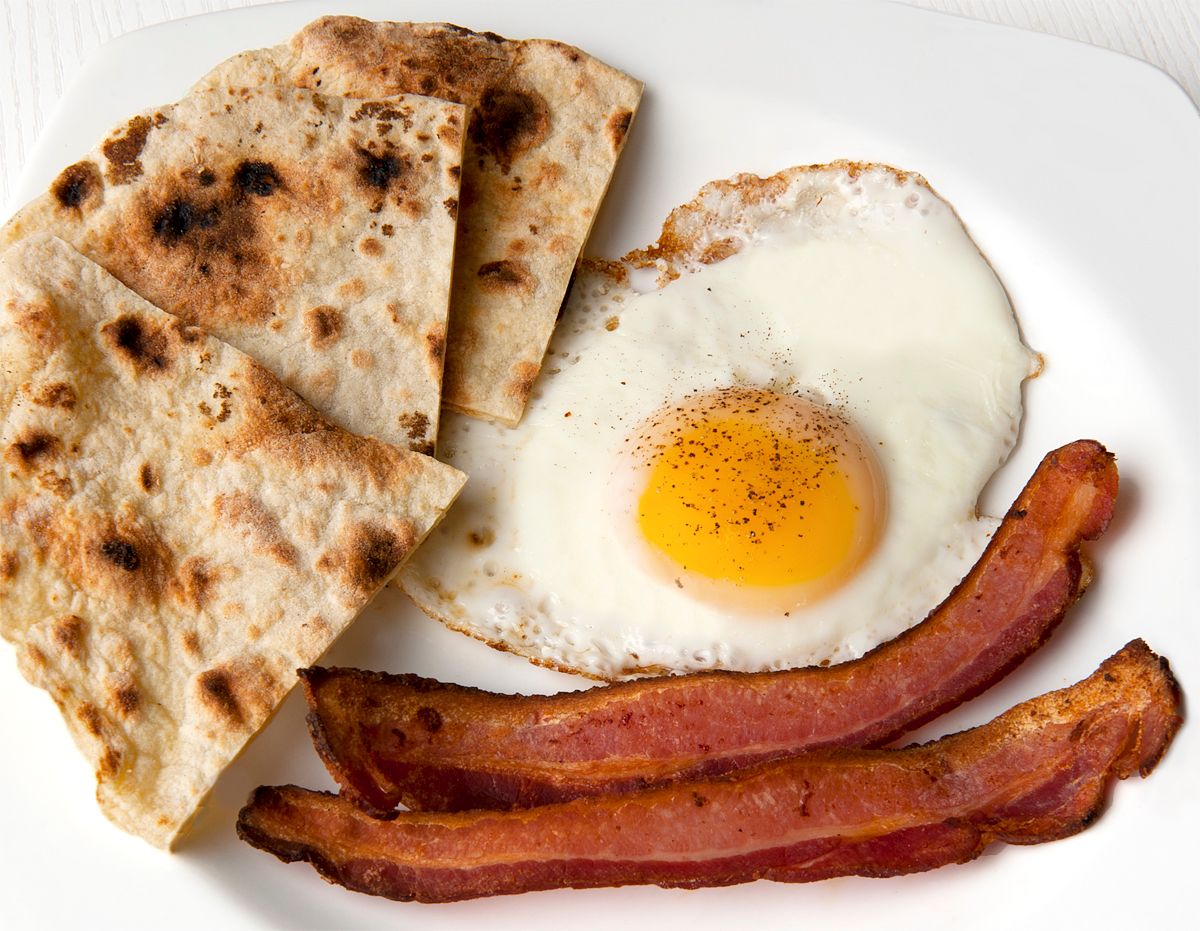I started searching for a Guest Pit Boss to write an article on belly bacon a couple of years ago and I'm really happy to share this one with you. Guest Pit Boss, Lynne is a Primo owner who hails from Nova Scotia, and is a regular on the Primo Forum which is where I met her. Her article will take us on a 6 day, start-to-finish journey, from the butcher shop to the freezer.
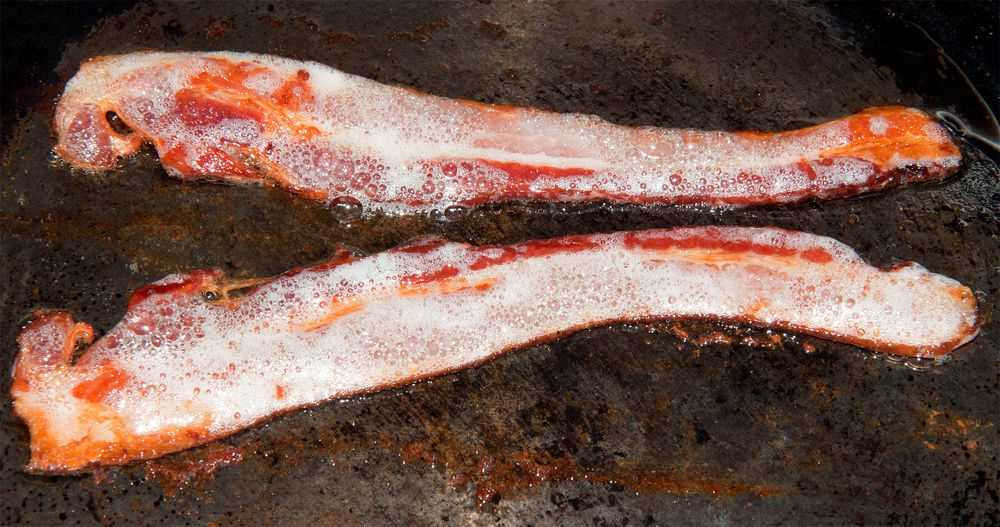
~~~~~~~~~ Lynne’s Breakfast Bacon from Pork Belly ~~~~~~~~~
I am working with a fresh 5.25 pound fresh pork belly that already had the rind removed before purchasing.
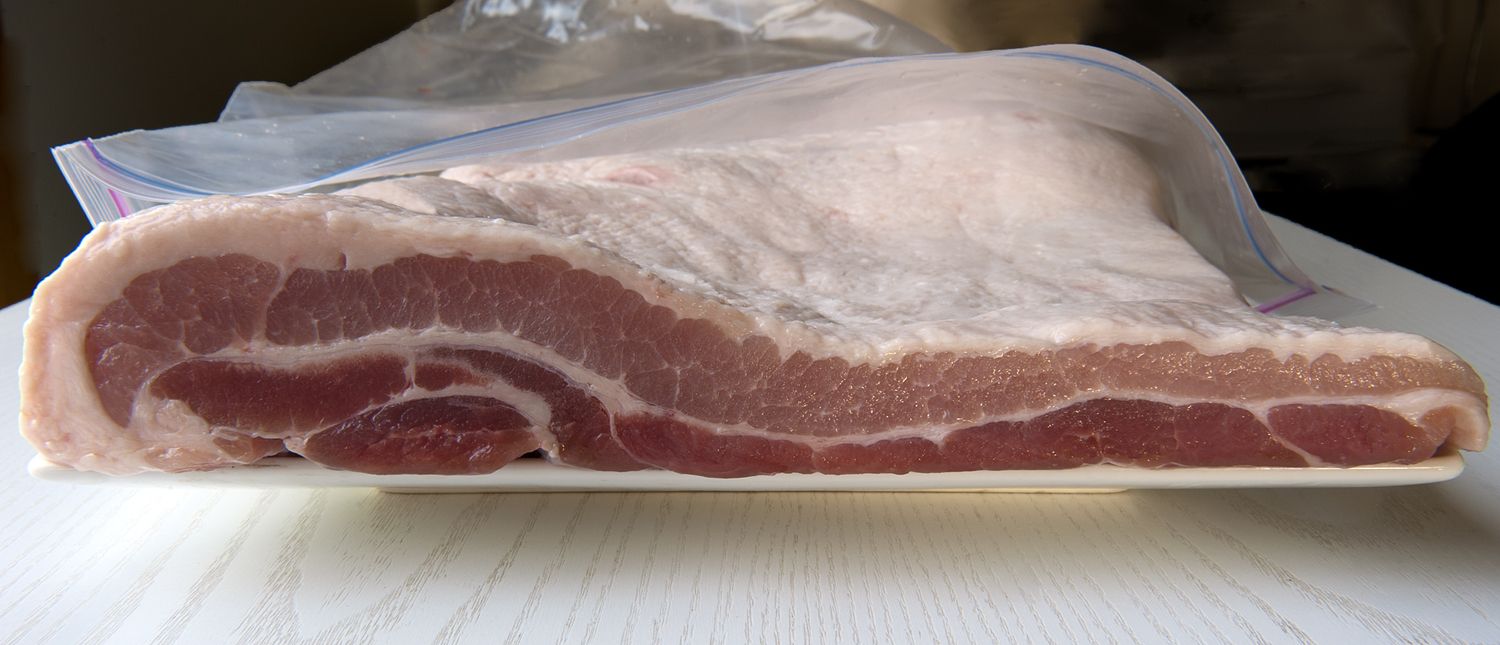
The spice mix that was used for this batch of breakfast bacon is given below.
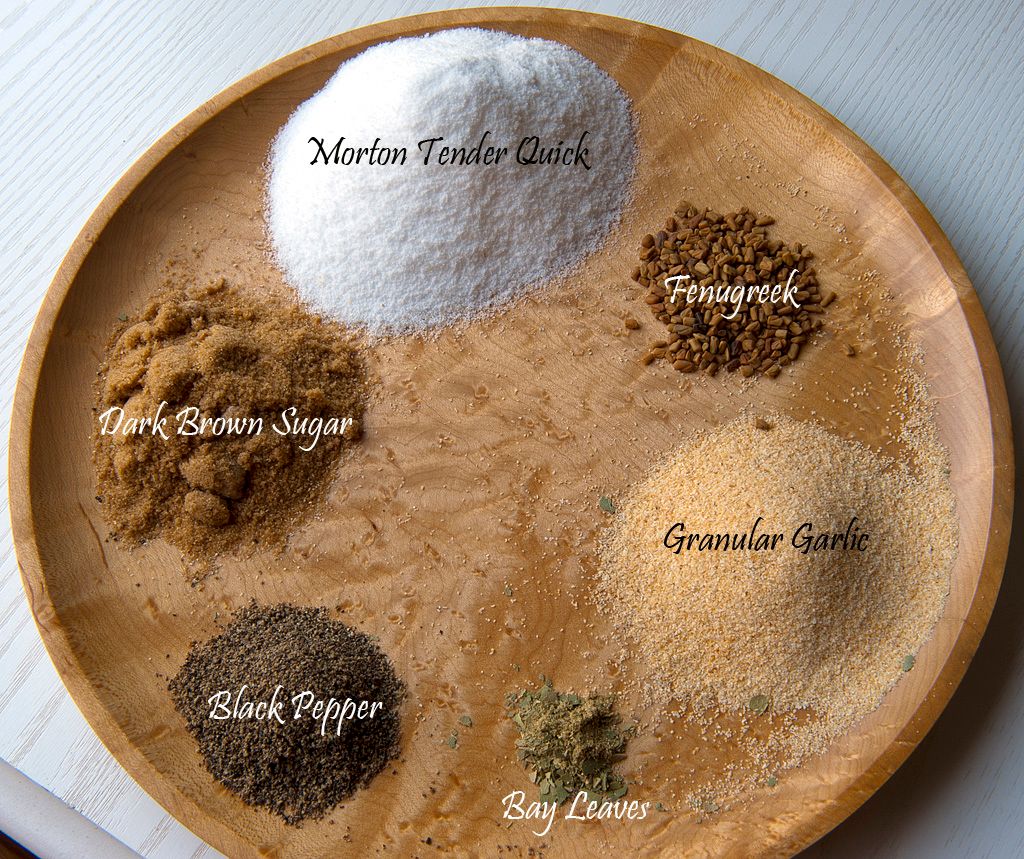
NOTE: these measurements are per pound of fresh pork belly.
1T Morton’s Tender Quick curing salt
1 teaspoon dark brown sugar
1 teaspoon granulated garlic
1/2 teaspoon fenugreek seeds
1/4 teaspoon fresh ground or cracked black pepper
1/2 crushed bay leaf
Mix the spices together. The amount and type of spice one uses can vary according to personal tastes but the amount of Morton curing salt should not be altered.
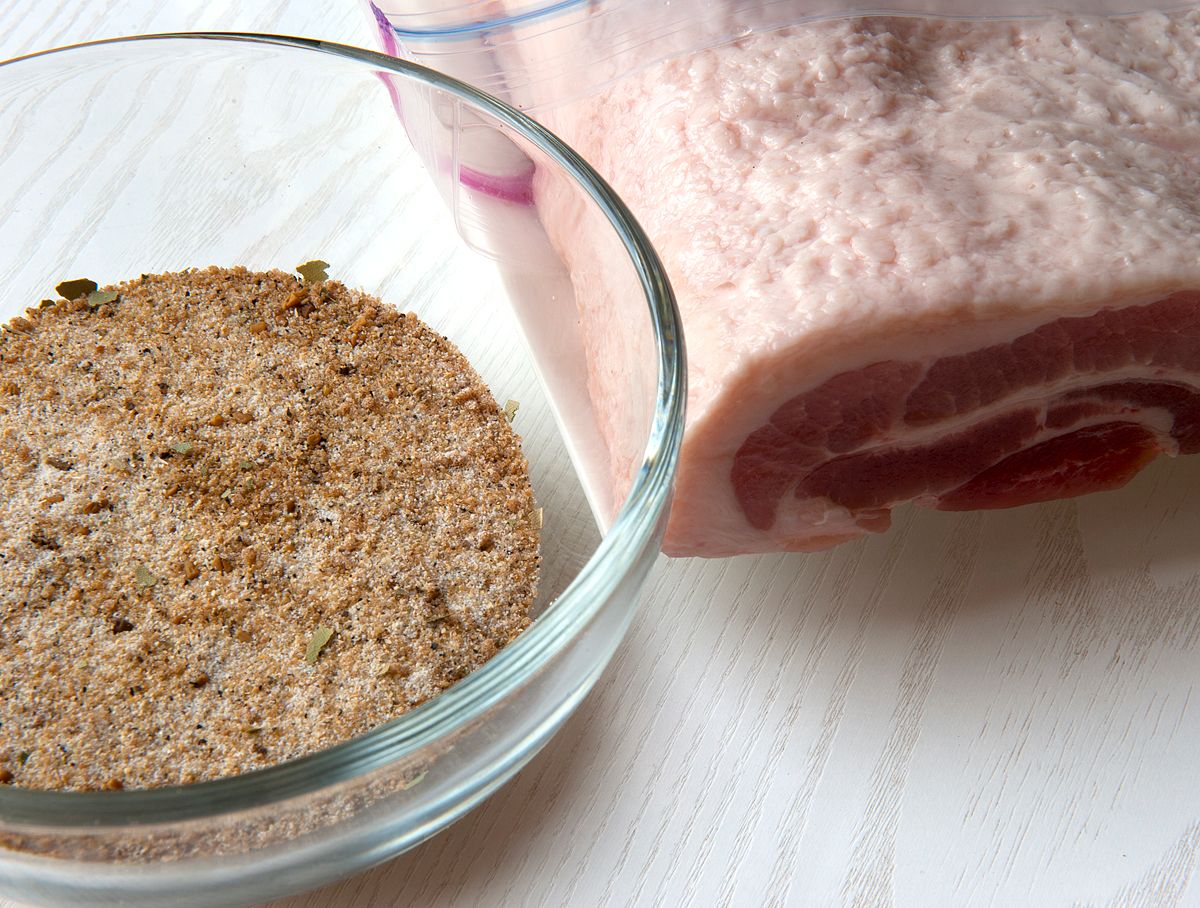
Place the pork belly in a zip lock bag and press the spice mix into all surfaces of the pork belly. Remove as much air as possible from the bag and seal.
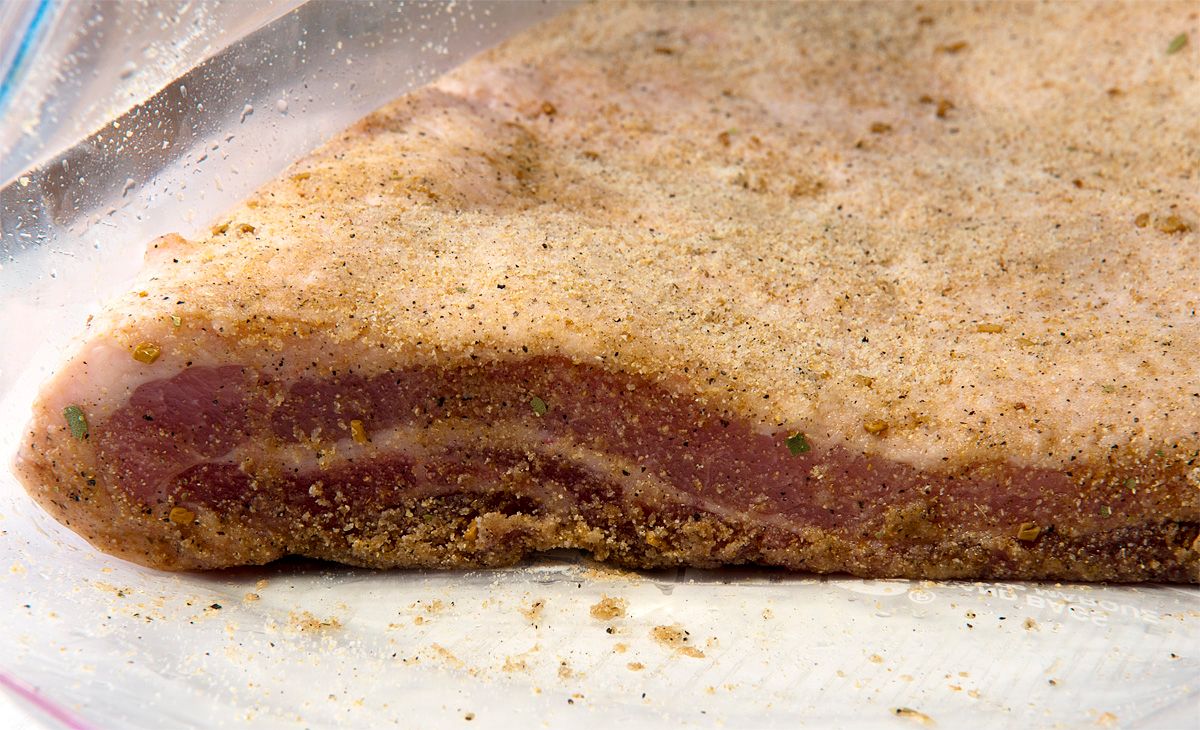
Place the pork belly in a fridge that has the temperature set to keep the meat in the range 34 -38 degrees F. Flip the bag over every day for 5 days. You will notice when you flip the bag for the first time that there will now be liquid in the bag, which indicates that the curing process is underway. Do not drain the liquid from the bag, this liquid brine is important to the process.
(NOTE: Curing time is based on thickness and Morton's recommends 7 days per inch of thickness.)
If your timetable is such that you would rather soak out the bacon overnight (10 or 12 hours), do at least 2 soak and rinse cycles. The soak cycles will remove excess salt, and don't be concerned if the bacon looks slightly pale.
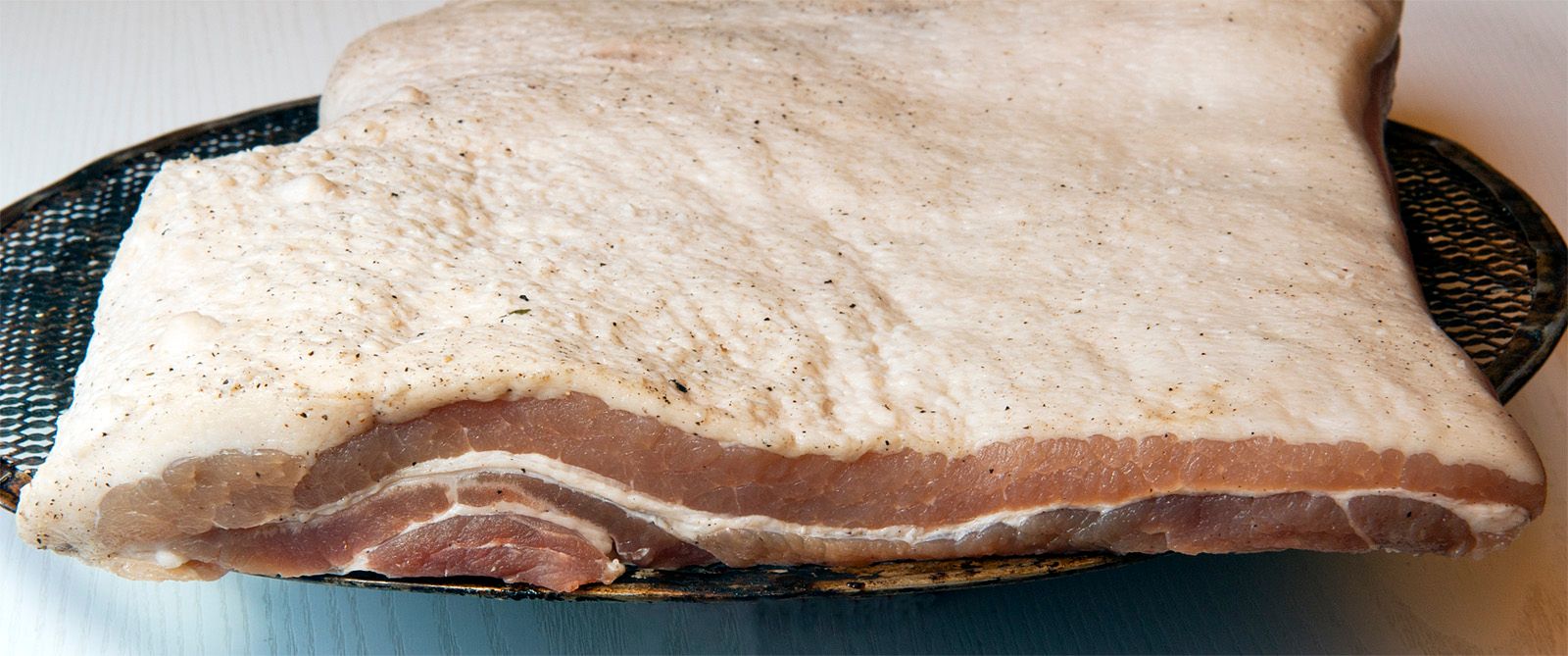
Once the soaking out process is finished, dry surface areas of the pork belly and set it uncovered on a rack in the fridge so the air can flow around the pork belly. This resting time will help equalize the liquids within the meat and also help with the pellicle formation which in turn will help the smoke adhere to the surface of the pork belly. The rest (or equalization) time is a minimum of 8 hours, but can be extended to 24 hours if needed.
Usually I use maple lump and I use cherry wood for the smoking wood.

Insert a thermometer into the thickest part of the pork belly. I set up the Primo grill so that the belly is on the raised grills and have a double layer of foil on the main grill under the belly. When the grill temperature is about 140 degrees F the pork belly is put on the raised grills. The temperature is kept in the 150 – 180 degree range for 2 hours or so and then allowed to creep up to 200 degrees F over the next couple of hours and then to 220 degrees F until the internal temperature of the meat is 150 degrees F. At this point the bacon is removed from the grill.

Allow the bacon to cool overnight in the fridge before slicing.
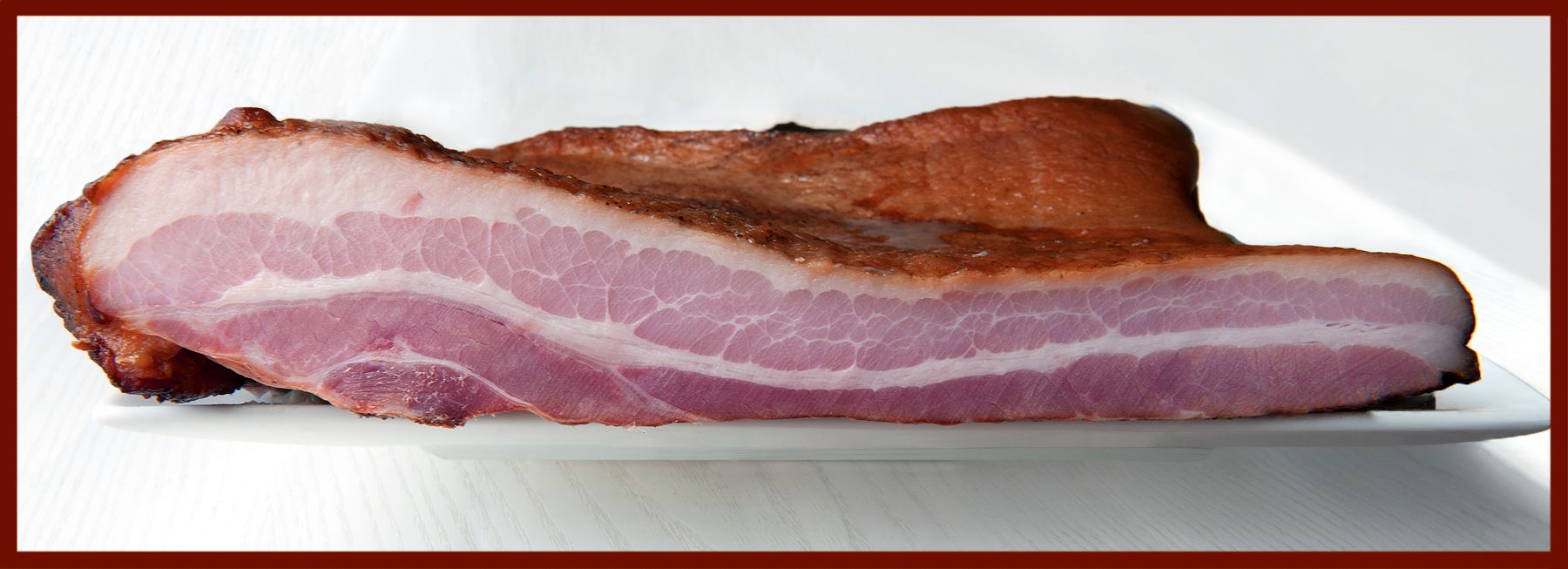
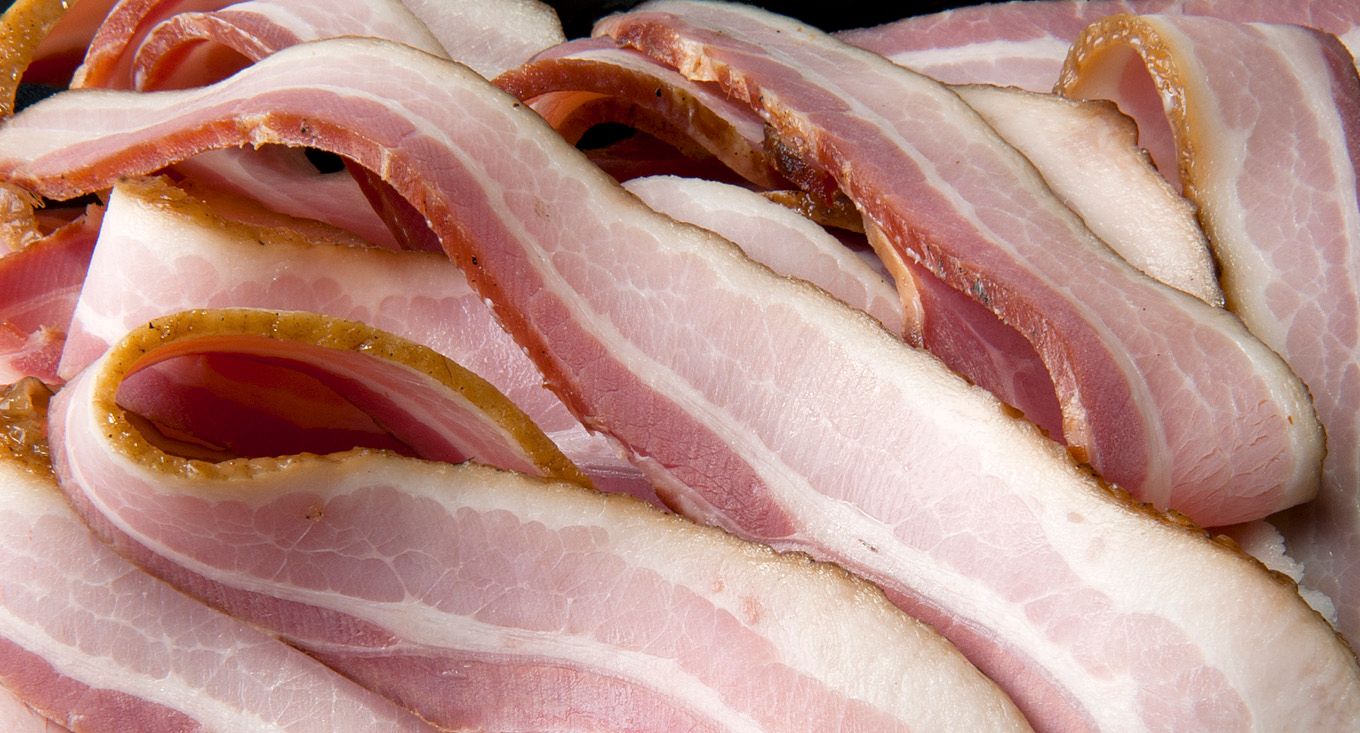
The next step is storing the finished product. I like to divide it up into small portions and seal it in Food Saver bags before storing in the freezer. The final amount of breakfast bacon was just over 4.25 pounds
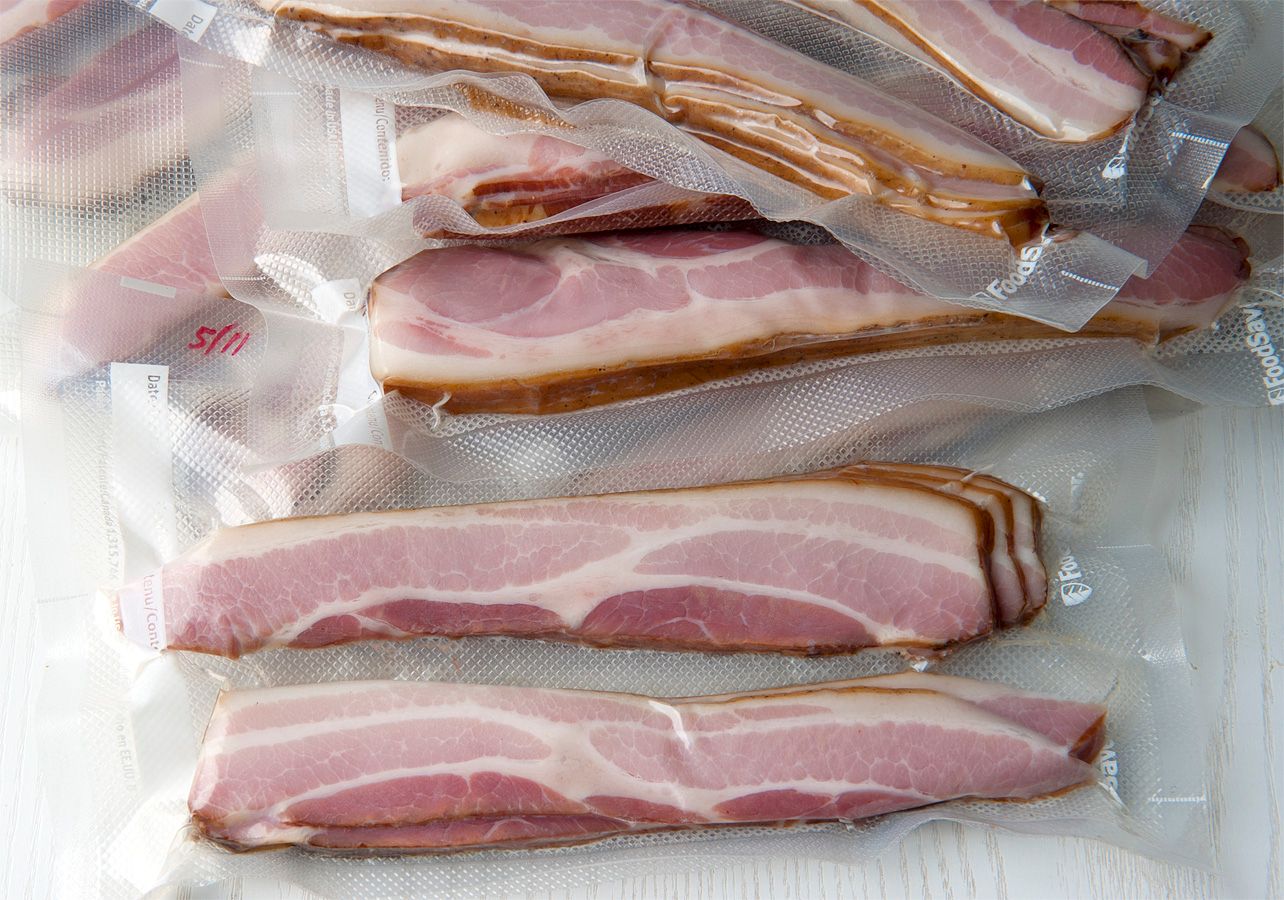
Last but not least –taste test
